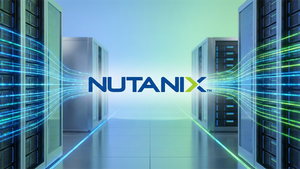
Global financial markets in 2025 are bracing for a tumultuous period, grappling with a complex web of elevated policy uncertainty, intensifying trade wars, persistent geopolitical stresses, and growing concerns over tech sector overvaluation. This intricate interplay of macro-financial headwinds is fostering a cautious, risk-off sentiment among investors, setting the stage for significant market volatility and potential corrections across asset classes. The coming year demands an acute awareness of these forces, as they are poised to reshape investment strategies and redefine the global economic order.
The immediate implications of this multifaceted risk environment are already being felt, manifesting in increased market volatility, shifts towards defensive assets, and a cautious stance from businesses and consumers. While the global economy shows a tenuous resilience, confidence remains fragile. Navigating this landscape will require unprecedented agility from corporations and a disciplined, diversified approach from investors.
A Perfect Storm: Understanding the Drivers of 2025's Market Volatility
The current market apprehension is not a product of a single isolated event but a convergence of powerful, interconnected forces, each capable of independently rattling global stability.
Elevated Policy Uncertainty: The year 2025 is defined by significant policy flux, primarily driven by the aftermath of the 2024 U.S. presidential election and the anticipated shifts of the incoming administration. Key provisions of the Tax Cuts and Jobs Act (TCJA) of 2017 are set to expire, sparking intense debate over tax policy, government spending, and debt. Globally, public debt levels reached 93% of GDP in 2024, pressuring for fiscal adjustments and potential austerity. Monetary policy also remains a significant wildcard; while the European Central Bank (ECB) initiated rate cuts, the Federal Reserve (Fed) continues to grapple with sticky inflation, making the trajectory of interest rates highly uncertain. Regulatory policy adds another layer of unpredictability, with intensifying protectionism, rapid technological advancements like AI creating regulatory vacuums, and evolving environmental regulations impacting various sectors. This pervasive uncertainty, as indicated by the Economic Policy Uncertainty Index reaching its highest levels this century, is causing businesses to delay strategic decisions, amplifying recession risks.
Ongoing Trade Wars: Trade wars have re-emerged as a paramount threat, with the U.S., China, and the European Union at the forefront of escalating tariff battles. In 2025, the U.S. has significantly increased tariffs on Chinese exports, with average rates reaching 57.6% across all goods, including a 10% universal tariff on most imports and a 50% tariff on certain copper products. China (SSE: 601398) has retaliated with tariffs on select U.S. agricultural, meat, and dairy products. A significant U.S.-EU trade deal in July 2025 saw the U.S. impose a 15% tariff on most EU goods, including automobiles and semiconductors, while the EU committed to eliminating tariffs on U.S. industrial goods and substantial purchases of U.S. energy and AI chips. Furthermore, the U.S. imposed 25% tariffs on most imports from Canada and Mexico (NYSE: CMX), escalating disputes over steel, aluminum, and autos. China also imposed provisional anti-dumping duties of up to 62.4% on EU pork products in September 2025. These measures are fracturing global supply chains, increasing production costs, and are projected to cause a decline in global merchandise trade, potentially reducing global GDP growth.
Geopolitical Stresses: The global geopolitical landscape remains highly volatile. The Israel-Palestine conflict continues its devastating humanitarian toll in Gaza, with the war estimated to cost Israel $67 billion through 2025. Direct hostilities between Iran and Israel escalated significantly in June 2025, with coordinated strikes on military and nuclear sites, leading to surges in oil prices. The Russia-Ukraine war persists, with Russian forces making costly advances and launching extensive airstrikes, further exacerbating a humanitarian crisis and global economic instability. Tensions in the South China Sea have escalated, particularly between the Philippines and China, with aggressive blocking tactics and near-collision incidents raising the risk of broader regional conflict. The Taiwan Strait remains a flashpoint, with China increasing military drills and incursions, raising concerns about a potential U.S.-China confrontation. The Sahel region also faces an intensifying crisis of violence, climate change impacts, and political instability. These stresses contribute to heightened market volatility, supply chain disruptions, and inflationary pressures, especially in energy and food sectors.
Tech Overvaluation: Concerns about overvaluation within the technology sector are intensifying, drawing significant parallels to the dot-com bubble. The S&P 500's forward 12-month P/E ratio stands at an elevated 22.4, while the average P/E of its top 10 companies approaches 50. A significant concentration risk exists, with the "Magnificent Seven" (Alphabet, Amazon, Apple, Meta, Microsoft, Nvidia, and Tesla) representing approximately 40% of the S&P 500's market capitalization. The AI sector, in particular, is seen as being in a speculative bubble, with companies like Palantir (NYSE: PLTR) and CrowdStrike (NASDAQ: CRWD) exhibiting "gargantuan" P/E ratios. OpenAI, despite its technological prowess, reportedly consumed $8.5 billion on AI training and staffing by July 2024, not expecting profit until 2029, yet valued at over $100 billion. The struggle to translate AI hype into tangible financial returns, as evidenced by a high failure rate of corporate AI pilots, poses a significant risk for a market correction. Potential triggers include earnings disappointments, fading AI hype, economic slowdowns, and increased regulatory scrutiny.
The Shifting Sands: Identifying Winners and Losers
This volatile environment will inevitably create a clear delineation between companies and sectors poised for resilience or growth, and those facing significant headwinds.
Likely Winners:
The heightened geopolitical tensions are ushering in a "new supercycle of spending" in defense and aerospace. Companies like Lockheed Martin (NYSE: LMT), RTX Corp. (NYSE: RTX), and Northrop Grumman (NYSE: NOC), with diversified portfolios in military hardware, cybersecurity, and advanced defense technologies, are securing substantial contracts as nations increase defense budgets and modernize arsenals.
Reshoring and domestic manufacturing are gaining traction due to trade wars and supply chain disruptions. This benefits industrial technology, automation, and robotics firms. Companies in building products, packaging, chemicals, and engineered equipment that support domestic production are poised for growth. The CHIPS and Science Act in the U.S. is driving massive investment in domestic semiconductor production, benefiting companies like NVIDIA (NASDAQ: NVDA), AMD (NASDAQ: AMD), and Apple (NASDAQ: AAPL) as they invest in U.S.-based infrastructure.
Cybersecurity and AI infrastructure providers are also set to win. Geopolitical risks necessitate robust cybersecurity, and the "AI arms race" is driving significant investments in AI infrastructure, cloud computing, and advanced analytics. Microsoft (NASDAQ: MSFT) and Alphabet (NASDAQ: GOOGL) continue to benefit from AI-driven growth, alongside specialized cybersecurity firms.
Precious metals, particularly gold, are acting as a safe haven amidst global uncertainties, fiscal imbalances, and trade tensions. Industrial metals like copper and aluminum are also seeing increased demand from the energy transition and defense rearmament.
Likely Losers:
Companies with undiversified global supply chains, especially those reliant on specific adversarial regions, are highly vulnerable. Manufacturers heavily dependent on imports from China, particularly in sectors like consumer electronics and automotive, face increased costs and disruptions dueas U.S. tariffs on Chinese chips doubled to 50% in 2025. Emerging market banks with high U.S. tariff trade exposures, such as those in Korea, Mexico, Taiwan, and Thailand, face weaker prospects.
The renewable energy sector is facing a "sector-specific recession" due to significant policy uncertainty. Companies relying on federal incentives and stable regulatory environments, such as solar power developers and wind energy companies, are struggling with fragmented state-level policies and potential rollbacks of federal tax credits, like those from the Inflation Reduction Act (IRA). Funding for solar companies declined 41% and energy storage companies plunged 81% in Q1 2025.
Semiconductor companies heavily reliant on advanced equipment from restricted regions, particularly Chinese foundries like SMIC (HKG: 0981), face challenges due to U.S. sanctions and export prohibitions on advanced chipmaking equipment, limiting their ability to reach cutting-edge manufacturing capabilities.
Sectors dependent on global trade volume, such as shipping, logistics, and certain export-oriented industries, will suffer from intensified protectionist policies and expected declines in global merchandise trade.
Finally, overvalued, unprofitable tech companies, especially those not focused on AI fundamentals, are at high risk. Firms valued on speculative potential rather than actual revenue and sustainable growth, or those highly dependent on cheap capital, are vulnerable to a shift in investor sentiment and tightening monetary conditions.
Broader Ripples: Industry Impact and Systemic Implications
The convergence of these market risks is not merely a sum of its parts; it creates powerful synergistic effects that shape broader industry trends and challenge established economic paradigms.
This environment is significantly accelerating deglobalization. Policy uncertainty and trade wars are prompting a re-evaluation of supply chain vulnerabilities, leading to increased reshoring and regionalization of trade. This shift, driven by national security and resilience concerns over pure economic efficiency, risks a more fragmented global economy and potential annual losses in global GDP, contributing to inflationary pressures.
Digitalization is also being impacted. Tariffs on hardware components like semiconductors increase costs for digital infrastructure. Trade tensions are escalating into the digital realm, with countries imposing digital service taxes or strict data regulations, threatening to fragment the internet and stifle cross-border data flows essential for AI development. Conversely, Central Bank Digital Currencies (CBDCs) are being explored to mitigate economic shocks from trade wars, offering new avenues for cross-border transactions, but also potential new forms of financial dependency.
The energy transition faces a complex outlook. Geopolitical stresses highlight the vulnerabilities of fossil fuel reliance, accelerating the push towards renewables for energy security. However, geopolitical competition is intensifying around green technologies and trade, potentially leading to increased tariffs and export restrictions in sectors like solar, EVs, and batteries. Governments are also prioritizing affordable energy and economic growth, which can create regulatory uncertainty for clean energy investors.
The ripple effects extend across industries: supply chain disruptions become systemic, increasing costs and reducing profit margins across sectors. Investment delays and capital reallocation are widespread as businesses pause strategic decisions. Financial instability looms as geopolitical risk events negatively affect asset prices and financial institutions, particularly in emerging markets. The competitive landscape for green technologies is also intensifying, leading to new trade frictions.
Historically, these situations bear striking resemblances to past crises. The current trade tensions, with potential U.S. tariff rates reaching their highest since 1909, echo the Smoot-Hawley Tariff Act of 1930, which exacerbated the Great Depression. The tech overvaluation concerns are frequently compared to the dot-com bubble of the late 1990s, where speculative investment in internet companies, many lacking viable business models, led to a dramatic market correction and widespread bankruptcies. While today's tech giants may have stronger fundamentals, the concentration of market cap and the struggles of many AI projects to generate profit still raise concerns. Historical geopolitical shocks have also consistently disrupted cross-border trade, investment, and asset prices.
The Road Ahead: What Comes Next?
The path forward for global financial markets in 2025 is fraught with both challenges and opportunities, demanding strategic foresight and adaptability.
In the short term, expect continued market volatility and potentially more subdued gains. Central bank actions regarding interest rates will be closely watched, with persistent "sticky" inflation posing a dilemma for policymakers. Global GDP growth is projected for a mild slowdown, with the U.S. economy cooling, the Eurozone lagging, and China facing ongoing structural challenges. The U.S. dollar is expected to weaken through 2026, offering potential opportunities in other currencies, though its safe-haven status may still lead to surges during periods of crisis.
In the long term, a fundamental reordering of the global financial landscape is underway. Deglobalization will likely accelerate, leading to more fragmented markets and potentially more expensive, but diversified, supply chains. This could result in a more complex, less predictable, and slower-growing global economy. However, long-term opportunities remain strong in areas aligned with major structural trends: continued technological innovation (especially AI), the ongoing energy transition, and demographic shifts driving demand in specific emerging markets.
Businesses must prioritize agility and innovation, leveraging generative AI to enhance operations and customer experiences. Diversifying revenue streams, strengthening financial bases, and re-architecting supply chains (e.g., through nearshoring) are crucial. Investing in talent development and data-driven decision-making will also be key.
Investors will need "economic prudence and strategic adaptation." This means rebalancing portfolios away from cyclical industries towards less trade-sensitive sectors like technology (specifically those with solid fundamentals) and services. Global diversification, incorporating alternative assets like gold or real estate, and exploring private markets are important considerations. A disciplined, long-term approach, using market dips to increase equity exposure, is advisable over market timing. Fixed income, particularly corporate bonds, is expected to play a crucial role as a portfolio ballast.
Market opportunities will emerge in technological innovation (AI), the energy transition, and potentially in select emerging markets as the U.S. dollar weakens. A rebound in M&A activity could also present opportunities in private markets. However, the challenges are significant: persistent macroeconomic volatility, inflationary pressures, escalating trade wars, tech overvaluation risks, and ongoing geopolitical instability will test both resilience and strategy.
Potential scenarios range from a baseline of moderate growth with high volatility to escalating protectionism leading to a broad-based downshift in global growth. Unforeseen geopolitical shocks could cause abrupt shifts in economic power, accelerating deglobalization. Despite the headwinds, some still anticipate a "new bull market" fueled by strong corporate fundamentals and continued AI investment, urging investors to use market dips as buying opportunities.
Conclusion: A New Era of Prudence and Adaptation
The year 2025 marks a definitive departure from the relative stability of past decades, ushering in a new era characterized by heightened and interconnected market risks. The combined forces of elevated policy uncertainty, persistent trade wars, escalating geopolitical stresses, and the specter of tech overvaluation are fundamentally reshaping the global financial landscape. These are not merely transient challenges but systemic shifts that demand a profound re-evaluation of how businesses operate and how investors allocate capital.
The key takeaway is clear: the era of predictable, uninterrupted globalization is giving way to a more fragmented, protectionist, and politically charged global economic order. Supply chain resilience, strategic autonomy, and national security considerations will increasingly dictate economic policy and corporate strategy. For businesses, this means prioritizing agility, technological integration, and diversified operations to mitigate external shocks. For investors, it necessitates a pivot towards greater prudence, diversification, and an shrewd, fundamentals-driven approach.
Moving forward, the market will likely remain susceptible to sudden shifts, making a vigilant approach paramount. Investors should carefully monitor signs of persistent inflation and central bank responses, as well as the evolving landscape of trade policy and geopolitical developments. Corporate earnings reports, particularly from the highly concentrated tech sector, will offer crucial insights into the sustainability of current valuations. The health of labor markets and consumer spending will also be vital indicators of underlying economic momentum.
Ultimately, the significance of 2025's market risks lies in their lasting impact on economic structures and investment paradigms. Those who adapt to this new reality by fostering resilience, embracing strategic flexibility, and making informed decisions will be best positioned not just to weather the storm, but to identify and capitalize on the opportunities that inevitably emerge from disruption. This is a moment for disciplined adaptation, turning potential headwinds into pathways for long-term strategic advantage.





